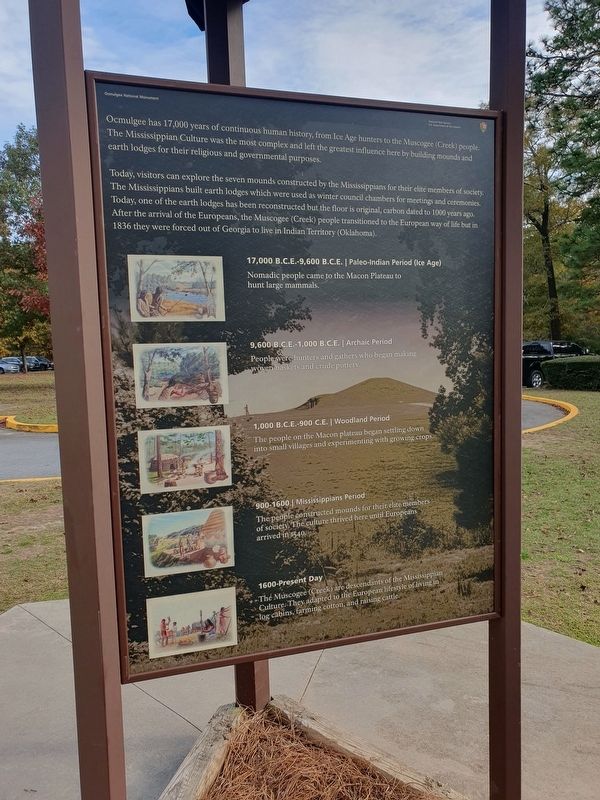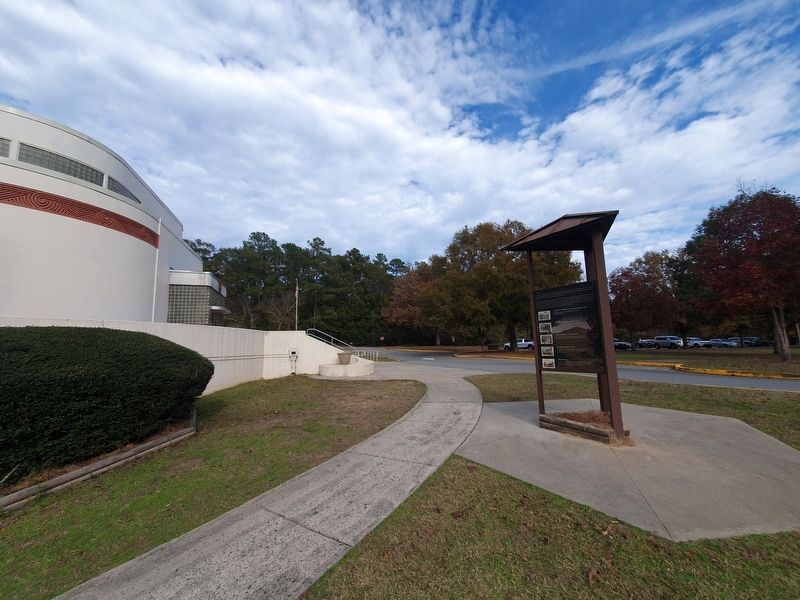Macon in Bibb County, Georgia — The American South (South Atlantic)
Ocmulgee National Monument
Ocmulgee National Monument
Ocmulgee has 17,000 years of continuous human history, from Ice Age hunters to the Muscogee (Creek) people. The Mississippian Culture was the most complex and left the greatest influence here by building mounds and earth lodges for their religious and governmental purposes.
Today, visitors can explore the seven mounds constructed by the Mississippians for their elite members of society. The Mississippians built earth lodges which were used as winter council chambers for meetings and ceremonies. Today, one of the earth lodges has been reconstructed but the floor is original, carbon dated to 1000 years ago. After the arrival of the Europeans, the Muscogee (Creek) people transitioned to the European way of life but in 1836 they were forced out of Georgia to live in Indian Territory (Oklahoma).
17,000 B.C.E. - 9,600 B.C.E. | Paleo-Indian Period (Ice Age)
Nomadic people came to the Macon Plateau to hunt large mammals.
9,600 B.C.E. - 1,000 B.C.E. | Archaic Period
People were hunters and gathers who began making woven baskets and crude pottery.
1,000 B.C.E. - 900 C.E. | Woodland Period
The people on the Macon plateau began settling down into small villages and experimenting with growing crops.
900 - 1600 Mississippians Period
The people constructed mounds for their elite members of society. The culture thrived here until Europeans arrived in 1540.
1600 - Present Day
The Muscogee (Creek) are descendants of the Mississippian Culture. They adapted to the European lifestyle of living in log cabins, farming cotton, and raising cattle.
Erected by National Park Service.
Topics. This historical marker and monument is listed in this topic list: Native Americans.
Location. 32° 50.548′ N, 83° 36.216′ W. Marker is in Macon, Georgia, in Bibb County. Marker is on Ocmulgee National Park Road, on the right when traveling east. Touch for map. Marker is at or near this postal address: 1207 Emery Hwy, Macon GA 31217, United States of America. Touch for directions.
Other nearby markers. At least 8 other markers are within walking distance of this marker. Yaupon Holly (within shouting distance of this marker); 17,000 Years of Continuous Human Habitation (within shouting distance of this marker); The Civilian Conservation Corps (CCC) 1933-1942 (within shouting distance of this marker); Battles of Dunlap Farm (within shouting distance of this marker); The Dunlap House (within shouting distance of this marker); William Bartram Trail (about 300 feet away, measured in a direct line); a different marker also named The Dunlap House (about 600 feet away); The Battle of Dunlap Hill-Stoneman's Raid (about 600 feet away). Touch for a list and map of all markers in Macon.
Credits. This page was last revised on April 6, 2024. It was originally submitted on April 6, 2024, by J. Makali Bruton of Accra, Ghana. This page has been viewed 37 times since then. Photos: 1, 2. submitted on April 6, 2024, by J. Makali Bruton of Accra, Ghana.

